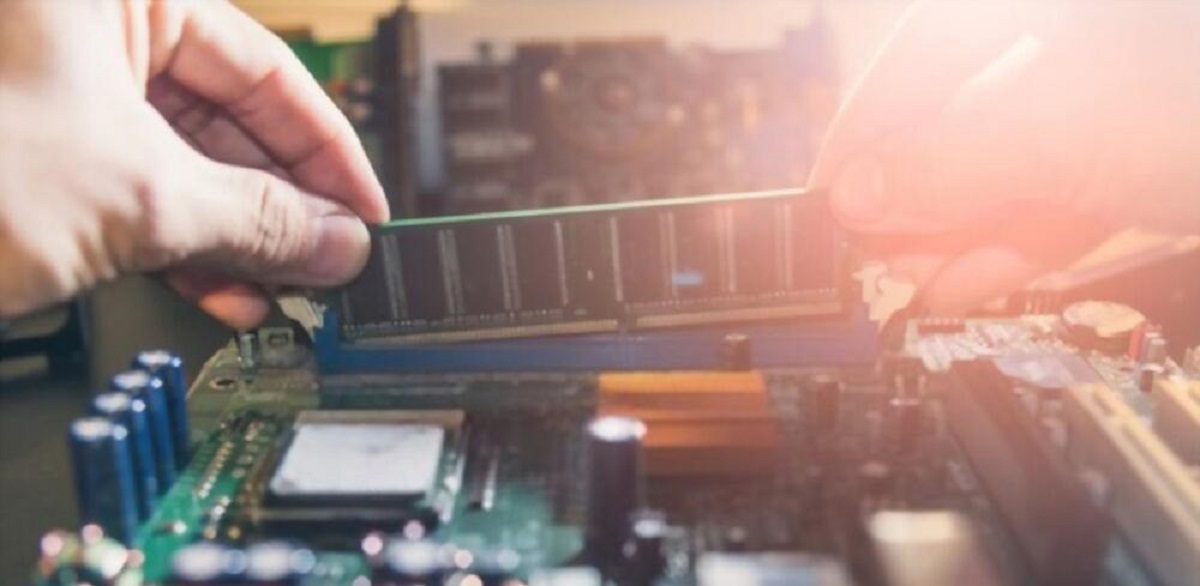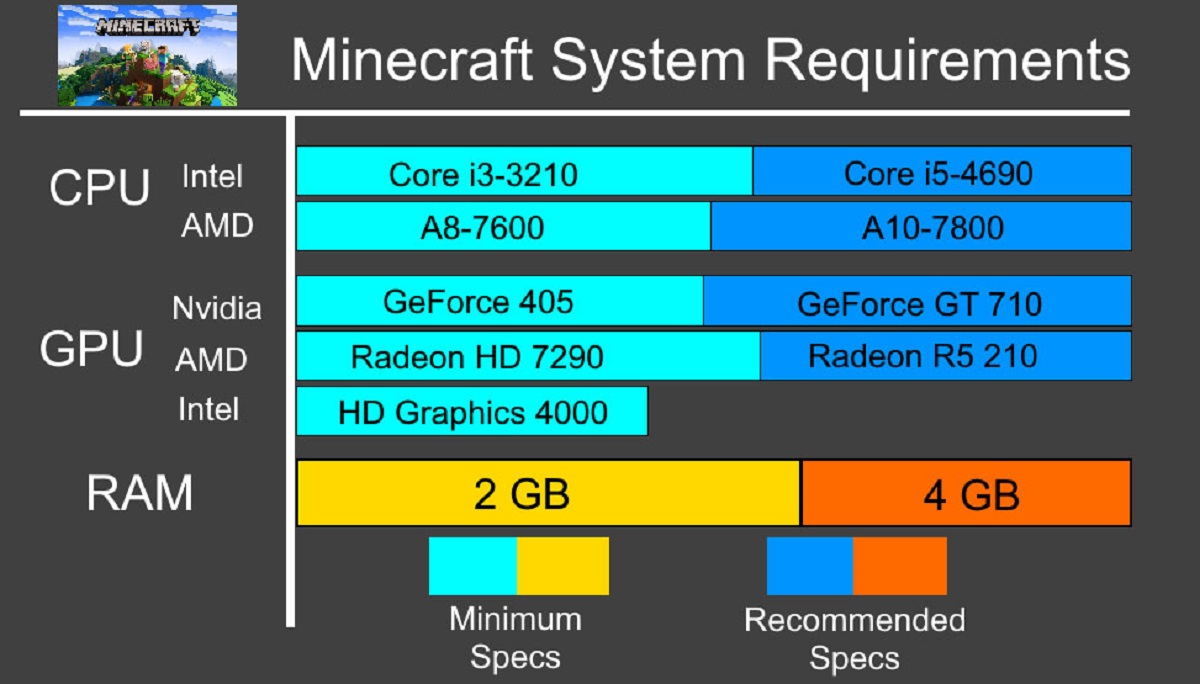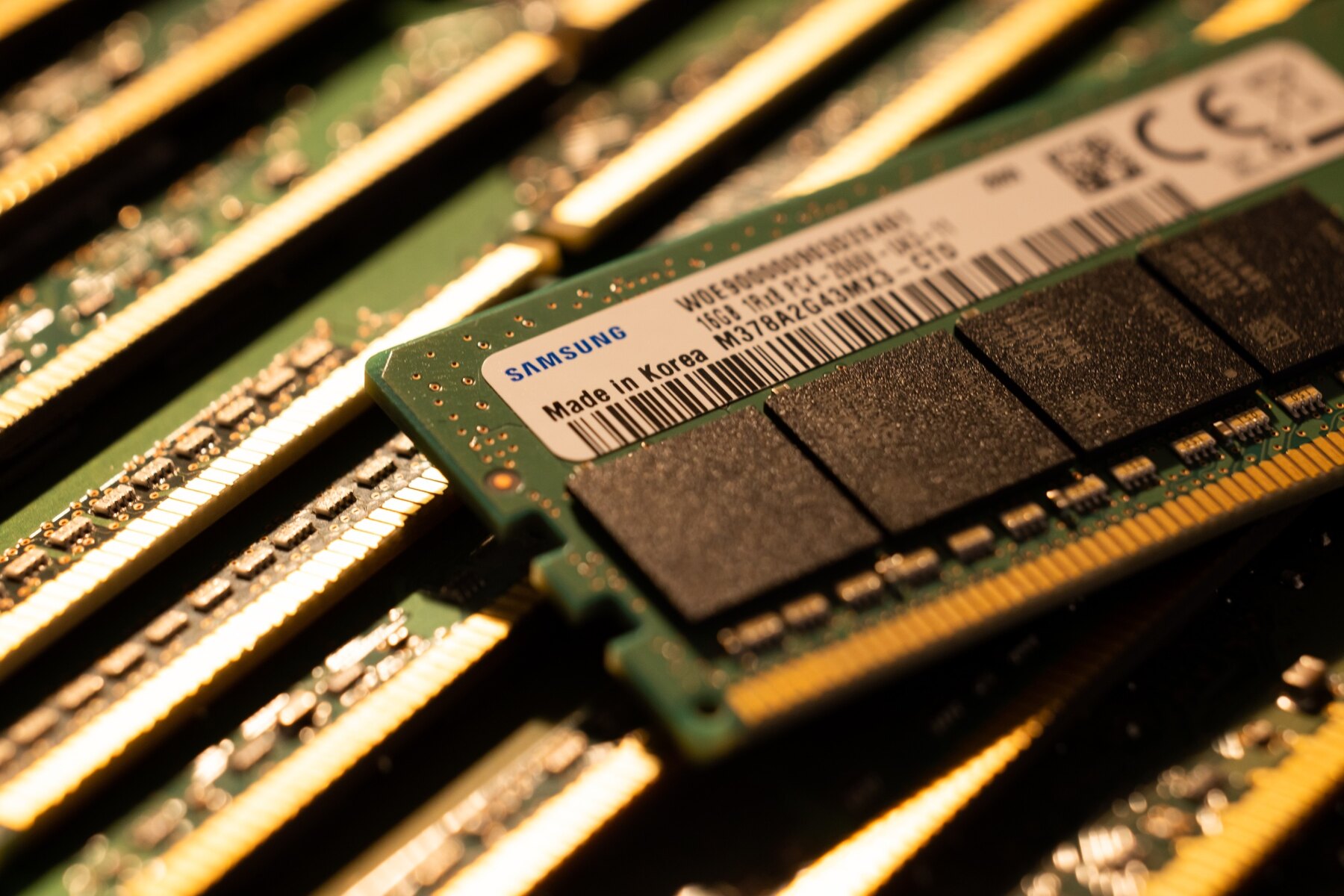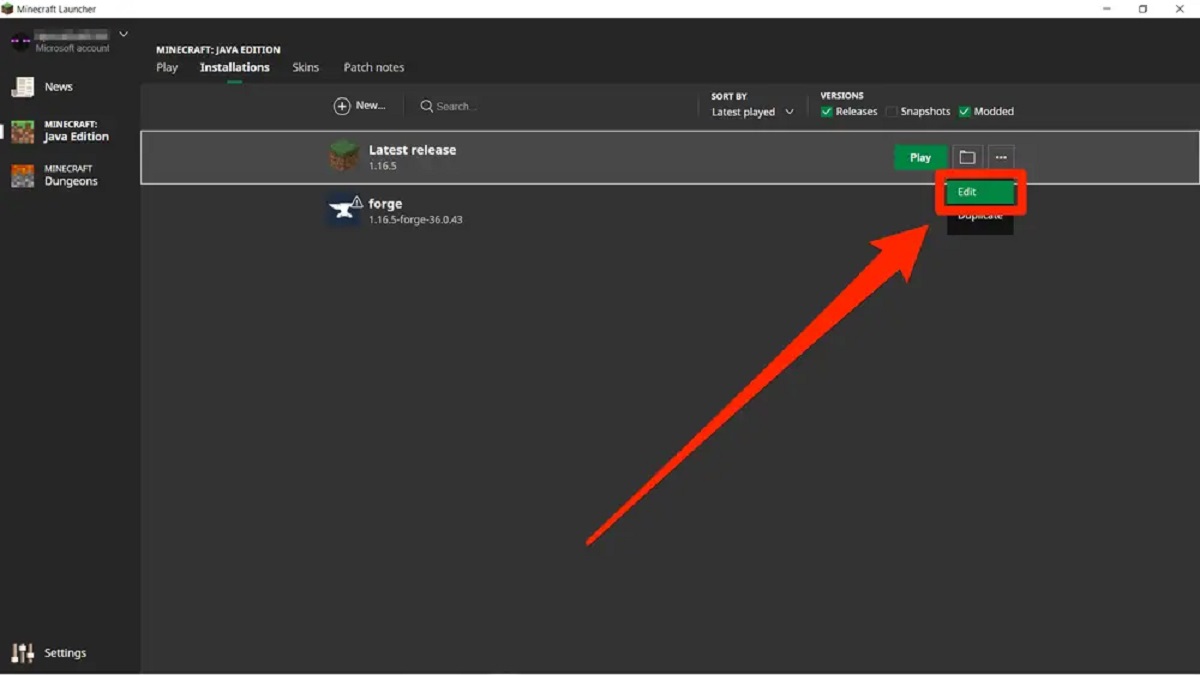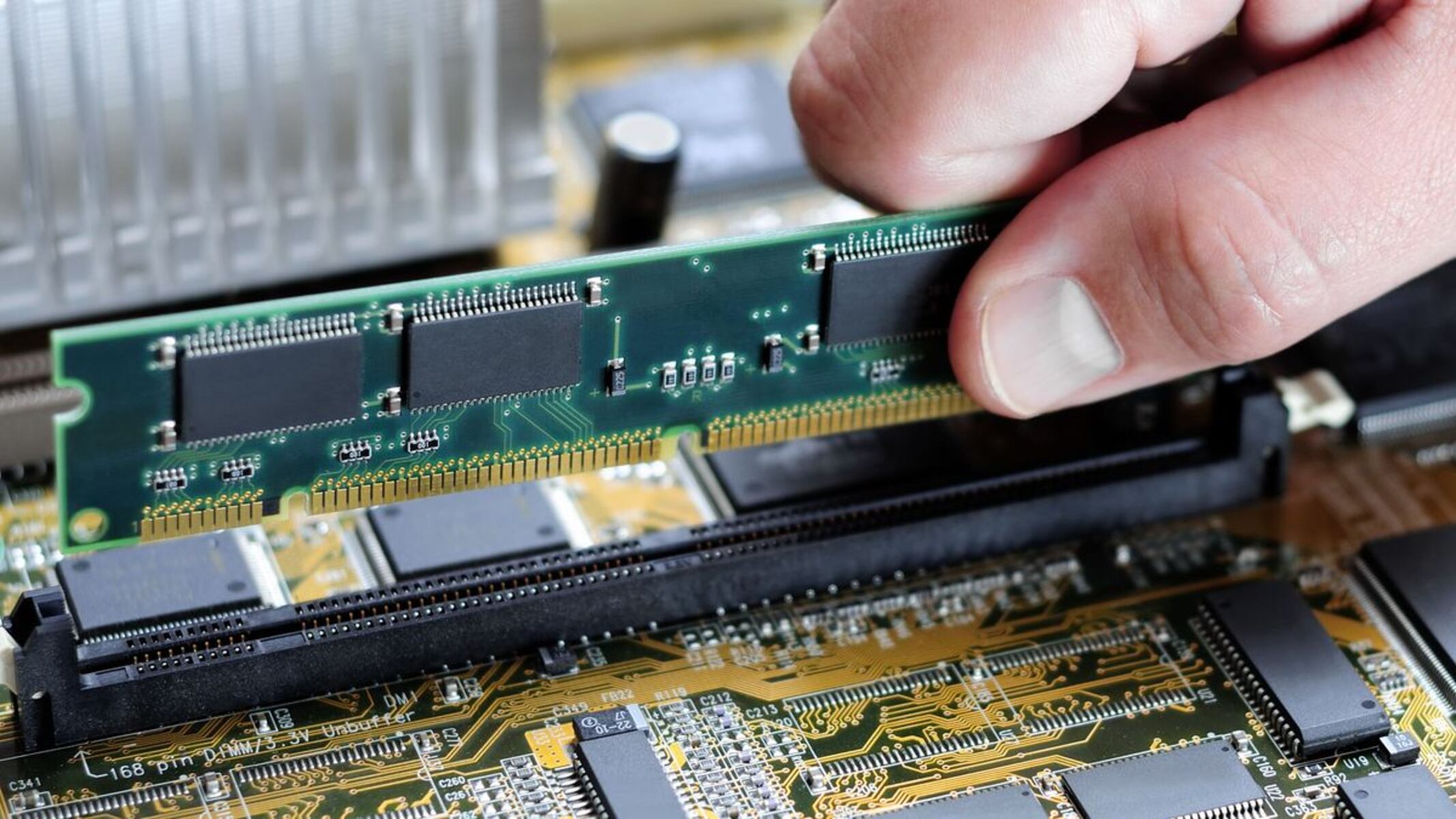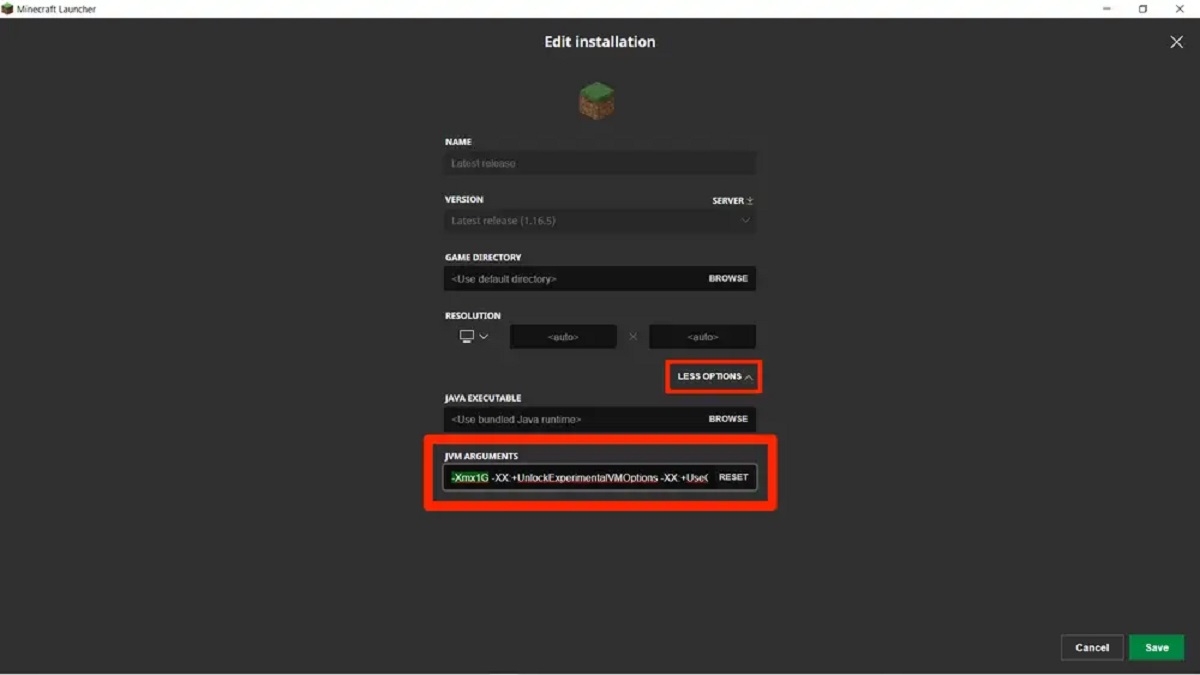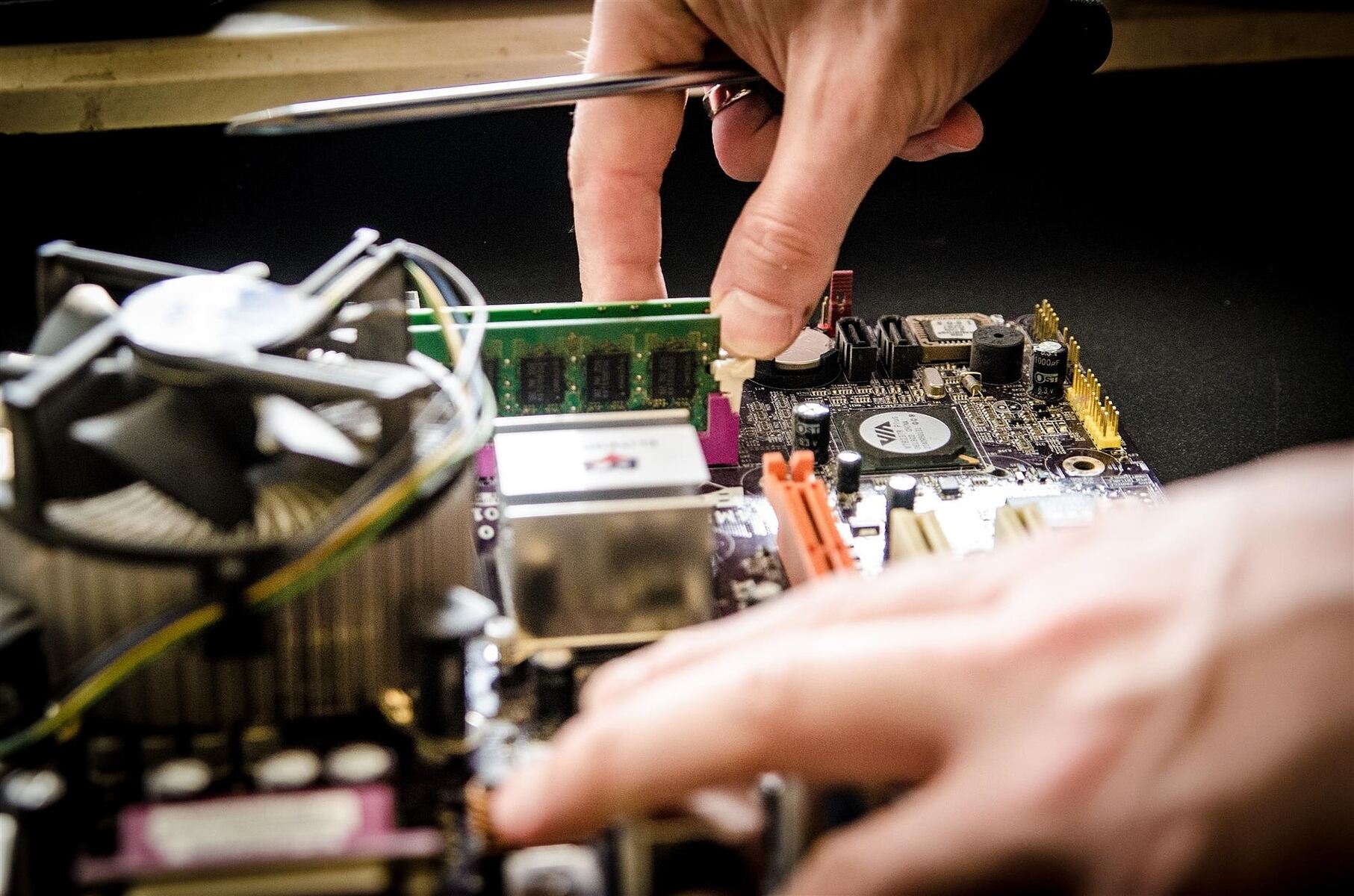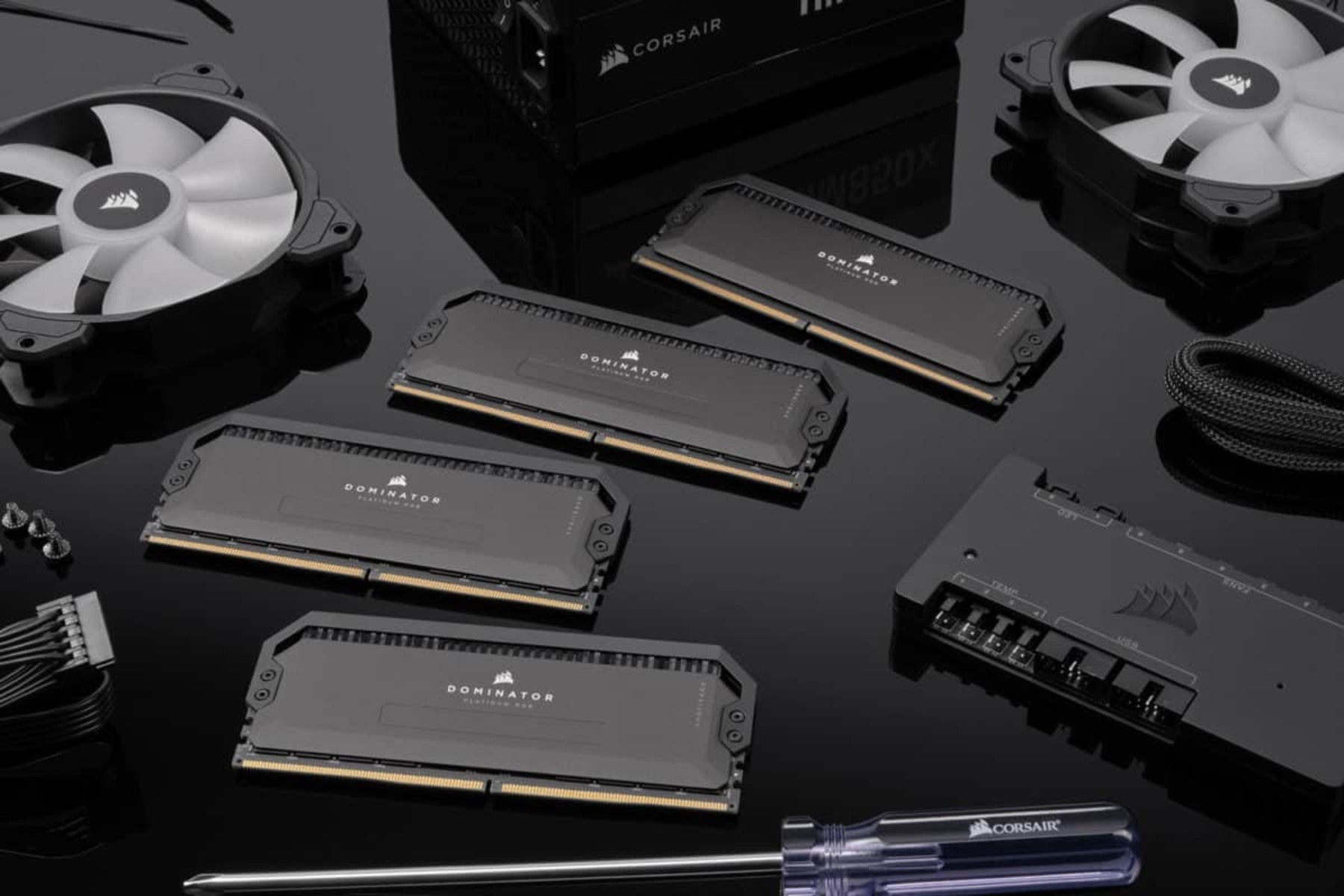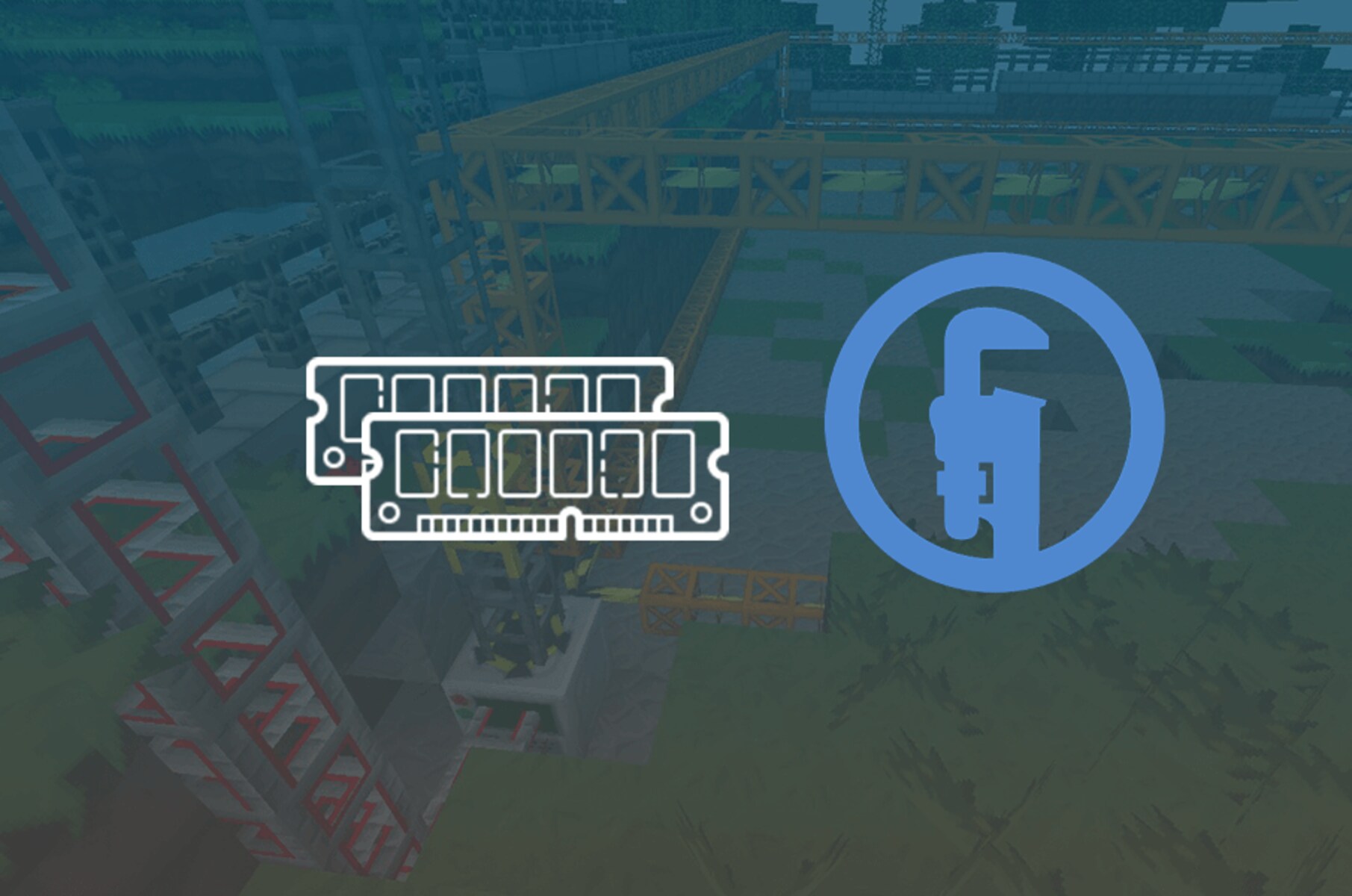Introduction
Welcome to the world of modded Minecraft! If you’re an avid player of Minecraft, you may have stumbled upon the term “modded Minecraft” at some point. But what exactly is it, and why does it require more RAM?
Modded Minecraft refers to the customization and enhancement of the base game through the installation of modifications, or mods. These mods add new features, mechanics, blocks, items, and even whole new dimensions to the game. From magic and technology to adventure and exploration, the possibilities are vast with modded Minecraft.
However, with the addition of mods, the game becomes more demanding in terms of system resources. This includes RAM, or Random Access Memory, which is responsible for storing data that the game needs to run smoothly. The more mods you have installed, the more RAM is required to handle the increased workload.
But just how much RAM do you need for a modded Minecraft server? The answer to this question is not so straightforward. It depends on various factors, such as the number of mods installed, the complexity of the mods, the number of players on the server, and the overall performance you desire.
In this article, we will explore how to determine the RAM needed for a modded Minecraft server and provide some general guidelines based on popular modpacks and player counts. But remember, these are just starting points, and you may need to adjust the allocations based on your specific setup and requirements.
Before we dive into the specifics, let’s discuss the factors that influence the RAM requirements for a modded Minecraft server. Understanding these factors will help you make informed decisions and optimize your server’s performance.
What is modded Minecraft?
Minecraft, developed by Mojang Studios, is a wildly popular sandbox video game that allows players to explore and build in a virtual world consisting of blocks. The game’s open-ended nature has sparked a massive community of players who have taken Minecraft to new heights by customizing and modifying the game through the use of mods.
Modded Minecraft refers to the practice of adding modifications or mods to the base game, enhancing and expanding its features. Mods are created by the Minecraft community and can be downloaded from various websites and platforms. These mods add new gameplay mechanics, introduce new blocks, items, and entities, and even create entirely new dimensions to explore.
Modded Minecraft is a fantastic way to breathe new life into the game and cater to different playstyles and interests. Whether you’re a fan of technology, magic, adventure, or building, there’s a mod out there that can amplify your Minecraft experience.
Modpacks are popular compilations of mods curated by dedicated Minecraft players and communities. They provide pre-configured sets of mods that work together harmoniously, ensuring compatibility and stability. Modpacks often have themes, such as futuristic technology, fantasy magic, or challenging survival, which add an extra layer of immersion and excitement to the game.
One of the significant advantages of modded Minecraft is the endless possibilities it offers. You can delve into complex automation systems, master powerful spells and enchantments, explore dangerous dungeons, or construct massive structures with advanced building tools. The creativity and ingenuity of the Minecraft community are boundless, and the mods available reflect this thriving ecosystem.
With modded Minecraft, the game is no longer limited to vanilla mechanics and content. It’s like having an entirely new game within Minecraft itself. The vibrant and diverse modding community ensures that there’s always something fresh and exciting to discover, making modded Minecraft a never-ending adventure.
In the next section, we will explore why modded Minecraft servers require more RAM and how to determine the appropriate amount needed for smooth gameplay.
Why does a modded Minecraft server require more RAM?
A modded Minecraft server requires more RAM because installing mods increases the complexity and demands of the game. Here are a few reasons why modded Minecraft servers require a higher RAM allocation:
Increased content: Mods add new blocks, items, mobs, dimensions, and gameplay mechanics to Minecraft, exponentially increasing the amount of content the server needs to handle. Each mod introduces unique features and interactions that require additional memory to store and process the data.
Complex calculations: Many mods in Minecraft involve intricate calculations, such as simulating realistic physics, complex crafting recipes, or simulating advanced machinery. These calculations require additional processing power, and therefore, more RAM to store and manipulate the data effectively.
World generation: Some mods introduce entirely new dimensions or biomes with unique landscapes, structures, and features. Generating these worlds requires additional memory as it involves creating and storing the terrain, structures, vegetation, and other elements specific to the modded dimension.
Redstone circuits: Mods often introduce new redstone components, which are used for complex automation and logic systems. These systems can be memory-intensive, especially when dealing with large-scale contraptions or networks with multiple inputs, outputs, and timing mechanisms.
Increased player interactions: Modded Minecraft often encourages multiplayer gameplay, allowing players to interact with each other in exciting ways. The increased complexity of mods and player interactions can put a strain on server resources, especially when multiple players are in close proximity or engaging in complex activities.
Optimization challenges: Mod creators and server administrators strive to optimize the performance of mods and servers. However, some mods may not be well-optimized or have conflicting interactions, leading to higher RAM usage. Additionally, mod updates and server plugins can introduce new features or optimizations that require additional memory.
Overall, the unique and diverse nature of mods in Minecraft requires more resources to provide a smooth and enjoyable gameplay experience. By allocating an appropriate amount of RAM to your modded Minecraft server, you can ensure that the game runs smoothly and minimizes potential crashes or lag.
In the next section, we will discuss how to determine the RAM needed for a modded Minecraft server, taking into account various factors and considerations.
How to determine the RAM needed for a modded Minecraft server
Choosing the right amount of RAM for your modded Minecraft server is essential to ensure optimal performance. Here are some steps to help you determine the appropriate RAM allocation:
1. Consider the number and complexity of mods: The more mods you have installed, the more RAM your server will require. Mods that introduce complex mechanics, new dimensions, or extensive world generation tend to be more demanding on system resources. Take note of the mods you plan to use and research their memory requirements or recommendations.
2. Estimate the number of players: The number of players connecting to your server also affects the RAM requirements. More players mean increased player interactions, entity calculations, and data storage. Consider the anticipated number of players and account for potential fluctuations, especially during peak times or events.
3. Review modpack documentation: If you’re using a modpack, check the modpack documentation or website for recommended RAM allocations. Modpack creators often provide guidelines based on extensive testing and community feedback, helping you determine a suitable starting point.
4. Experiment and monitor: It’s crucial to test different RAM allocations and monitor the server’s performance. Start with a conservative allocation and gauge the server’s performance, such as CPU usage, TPS (ticks per second), and memory usage. If the server experiences slowdowns, freezes, or crashes, consider increasing the RAM allocation gradually until you achieve stable performance.
5. Adjust as needed: Keep in mind that the RAM requirements may vary depending on your specific setup, including server hardware, operating system, plugins, and other factors. Continuously monitor and assess the performance of your server, making adjustments as necessary to ensure a smooth and enjoyable gameplay experience.
6. Seek community advice and support: Joining modded Minecraft communities, forums, or Discord channels can provide valuable insights and recommendations from experienced server administrators. Engage with the community to learn from their experiences and gather tips for optimizing RAM allocation and server performance.
Remember that determining the right amount of RAM for a modded Minecraft server can be a bit of trial and error. It’s essential to strike a balance between too little RAM causing lag and crashes, and too much RAM being underutilized and wasteful. By considering the factors above and adjusting accordingly, you will be able to find the ideal RAM allocation for your modded Minecraft server.
In the next section, we will discuss additional factors to consider when deciding how much RAM to allocate, ensuring a smooth and seamless gameplay experience for all players.
Factors to consider when deciding how much RAM to allocate
When determining how much RAM to allocate for your modded Minecraft server, it’s important to consider several factors that can impact performance and gameplay. Here are some key factors to keep in mind:
1. Number of mods: The number of mods installed on your server directly affects its RAM requirements. More mods typically mean more content and increased processing needs. Take into account the complexity and size of each mod to estimate how much additional memory is necessary to handle the increased workload.
2. Mod complexity: Some mods are more resource-intensive than others due to their advanced mechanics or feature sets. Mods with extensive world generation, complex interactions, or advanced AI may require more RAM to run smoothly. Consider the individual resource requirements of each mod to determine if additional memory is necessary.
3. World size: The size of your world can impact RAM usage. Larger worlds, especially those generated using mods with expansive features or custom dimensions, require more memory to store and render the additional terrain, structures, and entities.
4. Player count: The number of players connecting to your server affects its RAM requirements. More players mean increased entity calculations, player interactivity, and network activity. Evaluate the number of players expected to join your server and allocate enough RAM to handle their collective activities.
5. Server plugins: If you plan to use server plugins alongside your mods, consider their RAM usage as well. Some plugins, particularly those that introduce additional functionality or modify game mechanics, may require additional memory to operate effectively.
6. Available server resources: Understand the limitations of your server hardware and operating system. Evaluate the amount of RAM available to your server and allocate a portion of it for Minecraft. It’s essential to leave enough memory for the operating system and any other essential background processes to prevent performance issues.
7. Performance goals: Consider the desired performance level for your server. If you want a smooth gameplay experience with minimal lag, you may need to allocate more RAM to ensure the server can handle the modded content and player interactions without bottlenecking.
8. Server optimizations: Optimize your server settings, such as reducing render distance, disabling unnecessary features, or fine-tuning mod configurations. These optimizations can potentially reduce the RAM usage of your server and allow you to allocate resources more efficiently.
By taking these factors into account, you can make an informed decision about how much RAM to allocate for your modded Minecraft server. Keep in mind that these are general considerations, and it’s important to monitor your server’s performance and make adjustments as needed to maintain optimal gameplay.
In the next sections, we will provide some minimum RAM requirements for popular modpacks and recommended RAM allocations based on different player counts.
Minimum RAM requirements for popular modpacks
Modpacks offer a curated collection of mods that work together seamlessly to provide a unique gameplay experience. Each modpack has its own requirements and demands on system resources. Here are the minimum RAM recommendations for some popular modpacks:
- SkyFactory 4: This popular modpack by Darkosto recommends a minimum of 4GB of RAM for a smooth gameplay experience. It features a skyblock-style world with a focus on resource management and automation.
- FTB Revelation: The FTB Revelation modpack, known for its expansive explorative gameplay, suggests a minimum RAM allocation of 6GB. It offers a variety of mods, including Magic, Technology, and Adventure, allowing players to create their own unique experiences.
- Enigmatica 2: Enigmatica 2, available in both normal and expert modes, is a quest-based modpack that encourages exploration and progression. It is recommended to allocate a minimum of 6GB of RAM for smooth performance.
- All the Mods 6: This modpack focuses on providing an extensive selection of mods for players to customize their Minecraft experience. The developers recommend a minimum of 8GB of RAM for optimal performance.
- Roguelike Adventures and Dungeons: This adventure-based modpack, as the name suggests, is designed to offer challenging gameplay with dungeons, quests, and exploration. Allocating a minimum of 6GB of RAM is recommended for seamless gameplay.
It’s important to note that these are minimum recommendations and may vary depending on your specific server setup, the number of players, and the additional server plugins you may be using.
Remember to always refer to the modpack documentation or website for the most accurate and up-to-date information on minimum RAM requirements. It’s also recommended to allocate additional RAM if you have a larger player base or if you plan to add additional mods to the modpack.
In the next section, we will provide some recommended RAM allocations based on different player counts to help you ensure a smooth gameplay experience.
Recommended RAM allocations for different player counts
Allocating the right amount of RAM for your modded Minecraft server is crucial to accommodate the number of players and ensure smooth gameplay. Here are some recommended RAM allocations based on different player counts:
- 1-4 players: For a small server with 1-4 players, a minimum of 4GB of RAM should be sufficient. This allocation allows for a smooth experience with basic modpacks and gameplay interactions.
- 5-10 players: With an increased number of players, it’s recommended to allocate at least 6GB of RAM. This additional memory helps to handle the increased player interactions, entity calculations, and network activity.
- 10-20 players: For a medium-sized server with 10-20 players, allocating around 8-10GB of RAM should provide a stable gameplay experience. This allows for a higher level of player interactivity and additional mods without significant performance issues.
- 20+ players: For larger servers with 20 or more players, it’s recommended to allocate at least 12GB of RAM or more. This allows for smooth gameplay, handling a greater number of concurrent players and their associated activities.
Keep in mind that these are general recommendations and the actual RAM requirements may vary depending on the specific modpack, the complexity of mods, and the server’s performance optimizations. It’s always a good practice to monitor your server’s performance and adjust the RAM allocation as needed.
Additionally, it’s important to consider other factors such as the size of the world, the number of installed mods, and any server plugins that may increase resource usage. Be flexible to make adjustments based on these factors to ensure the best gameplay experience for your players.
It’s worth noting that allocating too much RAM can also have a negative impact on performance, as it may lead to inefficient memory usage and potential conflicts. Regularly monitor and optimize your server’s RAM usage to strike the right balance and maintain optimal performance.
In the next section, we will provide some tips for optimizing RAM usage on a modded Minecraft server, helping you make the most out of your allocated resources.
Tips for optimizing RAM usage on a modded Minecraft server
Efficiently managing and optimizing RAM usage on your modded Minecraft server is crucial for maintaining a smooth and stable gameplay experience. Here are some tips to help you optimize RAM usage:
- Select lightweight mods: Choose mods that are known for their efficiency and low resource usage. Look for mods that provide the functionality you desire without putting unnecessary strain on your server’s resources.
- Remove unused or conflicting mods: Regularly review and remove mods that are not actively being used or that may conflict with other mods. Removing unnecessary or conflicting mods can help reduce RAM usage and improve server performance.
- Adjust mod configurations: Some mods offer configuration options that allow you to tweak their resource usage. Explore the configuration files or settings of mods and optimize them for lower RAM consumption while maintaining the desired gameplay experience.
- Optimize world generation: If your modpack includes mods that introduce extensive world generation, consider limiting the size or complexity of generated terrain. This can help reduce RAM usage, especially during world generation and exploration.
- Periodically restart your server: Restarting your server on a regular basis can help clear memory leaks and free up resources. Plan scheduled restarts to ensure that your server’s RAM usage remains optimized and stable.
- Utilize server optimization plugins: Consider installing performance-oriented plugins that can help optimize your server’s memory usage. Plugins like ClearLag or OptiFine are designed to reduce entity counts, optimize rendering, and improve overall server performance.
- Limit view/render distance: Reducing the view or render distance in your server’s configuration can have a significant impact on RAM usage. Lowering the distance can help reduce the amount of data loaded and processed, resulting in improved performance and lower RAM requirements.
- Regularly update mods and plugins: Keeping your mods and plugins up to date is essential for ensuring compatibility, bug fixes, and optimizations. Developers often release updates that address memory-related issues, so staying updated can help improve RAM usage on your server.
Remember that optimizing RAM usage is an ongoing process. Regularly monitor your server’s performance, benchmark RAM usage, and make adjustments as needed. Every server setup is unique, so it’s important to fine-tune your configurations based on your specific hardware, modpack, and player requirements.
By employing these optimization techniques, you can ensure that your modded Minecraft server operates efficiently, providing players with a seamless and enjoyable gameplay experience.
In the concluding section, we will briefly recap the key points discussed in this article and emphasize the importance of optimizing RAM allocation for modded Minecraft servers.
Conclusion
In conclusion, modded Minecraft servers require more RAM due to the increased content, complex calculations, and player interactions introduced by mods. To determine the appropriate amount of RAM to allocate for your modded Minecraft server, consider factors such as the number and complexity of mods, the size of the world, the number of players, and your performance goals.
Start with the minimum RAM requirements recommended for popular modpacks as a starting point, but remember to assess your specific setup and adjust accordingly. Regularly monitor your server’s performance and make adjustments as needed to maintain optimal gameplay.
Optimizing RAM usage is essential for ensuring smooth server performance. Select lightweight mods, remove unused or conflicting mods, and adjust mod configurations to reduce RAM usage. Additionally, optimizing world generation, periodically restarting your server, and utilizing server optimization plugins can help optimize RAM usage and improve overall server performance.
Remember, every modded Minecraft server is unique, so it’s important to fine-tune your configurations and optimization techniques based on your specific setup and requirements.
By carefully managing and optimizing RAM allocation, you can create a modded Minecraft server that offers a seamless, immersive, and enjoyable experience for you and your players. So, dive into the world of modded Minecraft, unleash your creativity, and embark on countless adventures in this rich and diverse sandbox universe.







